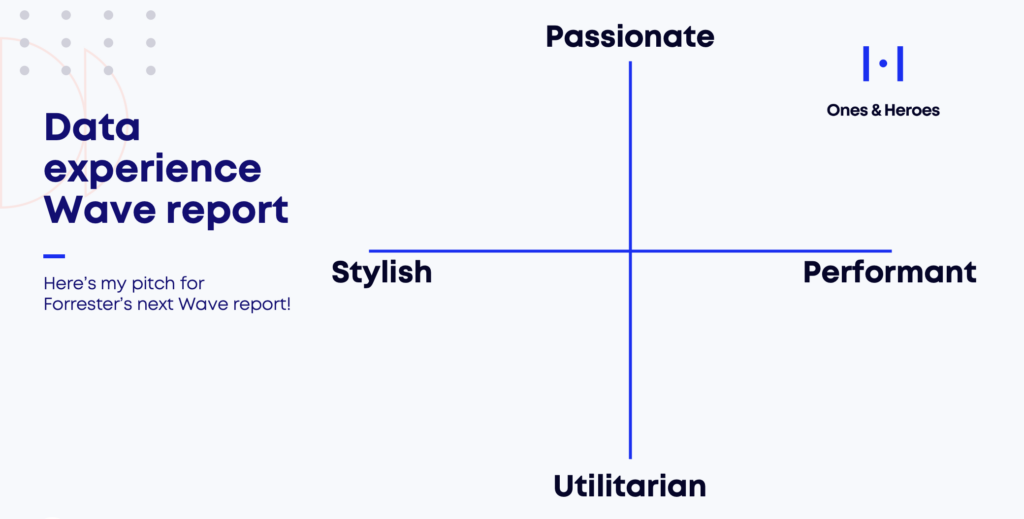I’ve been an on-and-off customer of Superhuman.com – a super slick email client that is designed to optimize email actions to be super fast. It’s $30/month ($25 with annual subscription), which sounds like a lot for an email client that doesn’t provide email hosting. But I’ll tell you – when I am using Superhuman’s client I’m between 2-4x faster in emails and the “flow” of getting through huge inboxes is just not replicable in any other client I’ve tried.
This is not an advertisement
Just to be clear:
- This post isn’t about emails – it’s about providing exceptional experiences, how to do that, and what it looks like when it happens.
- I’m not getting paid or compensated to write this, Superhuman doesn’t even know I’m posting about it.
- I’ve been a subscriber, cancelled, resubscribed, and am now cancelled again. First cancellation was because they only supported Gmail and Ones & Heroes switched to Office. I resubscribed when I got notification that MSFT was enabled. I cancelled again most recently b/c email delegation with my EA isn’t great. I’ll return when they’ve got it sorted.
It’s funny, if you think about it. Even when I can’t use their product right now, I find myself unusually loyal to the brand and am basically waiting for the opportunity to give them my money again. Why?
Because their dedication to making my experience with email is unparalleled. As far as I’m concerned, there is no other company on the face of this planet that cares as much as Superhuman does about making my email experience amazing.
As a founder I’m fascinated by how well Superhuman does this. It’s not just the app. The app is exceptionally well designed, but that alone wouldn’t get my loyalty. After all – why would I use shitty apps? Nah – that’s just table-stakes.
And I love them for that.
I’ve been talking about “data experience” and how we’re trying to ensure everyone’s experience with their own data is always exceptional. When I look at Superhuman’s focus on making my email experience exceptional I see a LOT of parallels.
It starts at the beginning
Superhuman’s onboarding process is a masterclass in user experience. When they first started, you couldn’t actually give them money unless you booked a training & onboarding session. I think it’s still their practice today (but they bent the rules when I resubscribed).
It’s a really powerful way to ensure your customers adapt to a new way of working and get the most out of your tool/service. They run one-on-one onboarding sessions for every new subscriber, allowing for a personalized experience that ensures people aren’t skipping or multi-tasking through your self-serve orientation guides. They aren’t just ensuring product stickiness – they’ve welded on a very human experience to that subscription. From the moment you start, it feels like Superhuman genuinely cares about your productivity and success.
Being a consultancy, Ones & Heroes™ has the advantage of getting that human connection up-front as a matter of course. Still, I see a lot of our passion for data experiences reflected in Superhuman’s experience with email. We want people to think, “damn – there isn’t another business on the face of this planet who cares more about how much I love my data or will go as far as they will to make it happen!” When Foresters launches their new Wave report for “data experience”, I’m hoping it looks something like this:

every single interaction I’ve ever had with a Superhuman employee has been nothing short of exceptional, even when they’re telling me no
It sounds like an exaggeration but it’s true. Without exception or exaggeration, every single interaction I’ve ever had with a Superhuman employee has been nothing short of exceptional, even when they’re telling me no. I’ve gone back and done a quick check. Over the last 5 years I’ve had:
- 19 support tickets opened by myself
- 39 response messages (including replies to my replies which I’m not counting, not counting news & updates)
- 1 unprompted / proactive outreach from support
- 8 unique Customer Delight Specialists (including one that spanned all five years)
- 5 responses telling me something I didn’t want to hear (i.e. unsupported feature, delays in releasing bug fixes, etc.)
- a universal 5/5 satisfaction rating across all 19 support tickets
From the point of consistency, that is a lot of touchpoints across multiple employees. Tech support is usually a metrics-driven, low-paying, high-stress, thankless job that sees high churn. Considering that, you can see why some people might say, “tech support is where company culture goes to die.” However that couldn’t be farther from the truth for Superhuman. To see such a high degree of consistency across a support team delivering this kind of excellence makes me want to study and reverse engineer how they’ve made this scale so well[1]. If my eight support people there were this consistent, I’ve got no doubt that’s true for everyone in that team.
And that’s crazy powerful because:
Culture eats strategy for breakfast.
Peter Drucker
If you’ve ever built or led a support team (or any group who has lots of direct client/customer interactions) you know how hard it is to get people who are strong representatives in the business, and you focus retention and development on a bell curve knowing you’re going to see some crazy churn every year. Building that cultural alignment is a real superpower. I’m talking Superhuman’s inspirational support team, but I think it’s a thing in all parts of any organization. From janitorial to C-suite, nailing that cultural cohesion is so critical to ensuring a uniform experience.
I’m told the team over there is measured on response time, not volume of closes nor reopens. In true Freakonomics fashion, the incentives that come from measuring responsiveness means there’s a fundamental shift in how Superhuman empowers their employees to put their customer’s experience first, allowing employee to think & engage differently to solve problems. It’s not about close rates (which can lead to impersonal and superficial behavior), and it’s not about avoiding reopens (which means you’re less worried about asking for follow-up information).
The key takeaway here is that culture can’t just be a crash course you give during orientation. You’ve got to live it and breath it, and that means aligning processes, measurement, and other operational concerns with the culture. WHen you do, you’ve got people who not only want to behave in-line with your culture – they can excel at it. I’m willing to bet this alignment isn’t just in Superhuman’s tech support department – in fact I can’t imagine a scenario where the entire organization isn’t fully aligned with the customer email experience. [definitely my words and speculation – I’ve not interviewed anyone there yet]
In building teams and rebuilding culture myself in various prior experiences there tended to be an “all or nothing” moment where “super-alignment” had to be met or my team wouldn’t be able to break through those cultural barriers. Having processes and procedures that reinforce this is just so critical to making your culture more than just a poster on the wall.
Not everything is a problem
It’s worth pointing out that those “tickets” aren’t all issues and bugs; I’m not that high-maintenance or email-crippled! Superhuman makes it insanely easy for customers to provide suggestions and recommendations, which they track and log (up to 100k last time I checked[2]).
What’s amazing from an experience perspective is how smooth this workflow is from my point of view. Here’s how I described it in an email once:
This process of making it stupid-easy to share feature ideas, getting acknowledgement of them, and knowing that IF it fits the vision and IF it fits a timetable that it MAY happen is actually the perfect UX from my perspective. I’ve had the thought, dumped it on you guys, and if I see it come back great- but if I don’t I know it’s for a good reason. There’s no other app I’m aware of that lets users offload the cognitive load of feedback as slick as Superhuman.
me, completely smitten by the design + strategy of it all
So the experience of providing suggestions feels slick and smooth, but just as importantly, Superhuman is super strategic about collecting and prioritizing feature requests. When I cancelled b/c we moved off the Google platform to Microsoft Office, they recorded the reason why I cancelled and notified me as soon as I could sign up for the beta release for MSFT. That didn’t just get me back as a paying customer – it made a personal touch that made me feel like they really cared about helping me get that exceptional email experience. I know it was all automated lists linked to feature releases and there wasn’t a human sitting around thinking about Patrick Mazzotta specifically. But the fact that they have a process to make it all happen is actually the thoughtfulness I feel.
Ones & Heroes™ isn’t [yet] in the SaaS/software space, so our approach to collecting feedback isn’t as sophisticated. But it does exist and we are just as committed to getting that great feedback.
Even problems aren’t a problem when you skip the bull****
So I’ve submitted five feature requests & bug reports that came back with an answer I didn’t want to hear. But every time I got those responses, I loved it. The thoughtfulness that accompanies the candor adds up to a response that I fully respect. Here is one example with my thoughts:
Hey, Patrick — thanks for reaching out 👋
There isn’t a way to report phishing emails directly from Superhuman quite yet. Building features for this is on our roadmap, though — I left a note to update you once we’ve got more to share on that 🙂
Can I lend a hand with anything else for now?
I like being able to flag the difference between spam and phishing, and see value in it from a domain administrator perspective, so I asked about it. This agent could have just said, “Sorry – this isn’t supported right now. Here’s what you can do instead…” Did you catch the difference though? By telling me it’s on a roadmap and queueing me for relevant updates I don’t feel like I’m just getting a canned response to “solve the problem” and get out of their ticketing queue. They haven’t resolved my issue (I want the feature in the app), but there’s an acknowledgment on how this problem needs to be resolved (roadmap) and there’s thoughtfulness to let me know when it does (update note). For the record, they have reached out to me for other relevant updates, so the follow-through is real. If they didn’t, there’d be a lot more skepticism about how genuine that statement is. You know as well as I do that follow-through and follow-ups are absolutely essential to nailing the trust you’re asking for when you’re saying something is coming later.
How you approach or respond to a situation is really important. Being correct & factual is good (maybe table stakes?) but doing it in an honest way is key. I see so many interactions with various company employees who try to spin everything into a positive light or downplay the importance of the issue raised. It’s drilled into them that critical feedback or bug reports should be handled like a PR issue, and I think that’s a real shame.
I’ll tell you what: nothing loses me as a customer or client faster than having a company or brand treat everything like a PR spin.
In conclusion…
If you take two steps back and look at the big picture, what’s really happening here is Superhuman has designed itself to not just make an app with a great UI – they’ve committed multiple (all?) aspects of their business to improve the customer’s email experience. To recap:
- get that human contact in early, make it personal
- don’t constrain your employees interactions with rules; drive with guidance and lots of independence
- make communication real & genuine, avoid the temptation to copy/paste
- ensure your processes and operational setup encourages & nurtures your culture
- everyone loves the person who goes the extra distance – even if it’s just a few inches
- never bullshit your client/customer; always take ownership
Seeing that they’ve been able to scale this gives me a tonne[3] of confidence that the thesis Harmony and I have developed for Ones & Heroes™ – to focus on the experiences that help you fall in love with your data – isn’t just good on paper. It’s achievable at scale in the real world!
And with that, I’m going to have a great sleep tonight.
Footnotes
- If you work at Superhuman and can hook me up with a peek under the hood, please hit me up. This isn’t hyperbole! I’d love to see how you do this!
- Special shout-out to Alexandra who answered some questions from me on Superhuman’s support operations and how her team works (i.e. nothing about my email at all). I mean… what a freaking fabulous experience! Even when I was asking stuff way outside her job description to handle, she made me feel welcomed and valued and never a burden. BUT PLEASE don’t start hitting up Superhuman Customer Delight staff directly for support. Follow the normal channels to get help – they are all amazing!
- I could say a “ton” of experience, but a ton is just 2,000 lbs whereas a tonne is 1,000kg – which is heavier by ~10.2%! I’ll take that extra 10% weighty confidence in this statement! 😈


